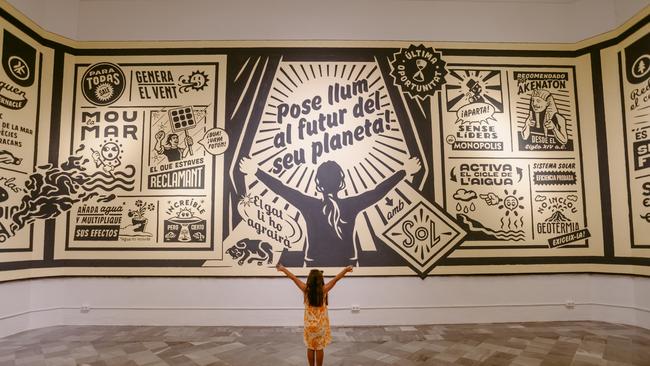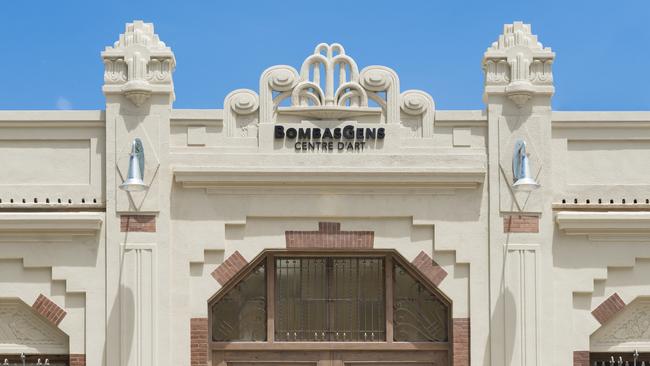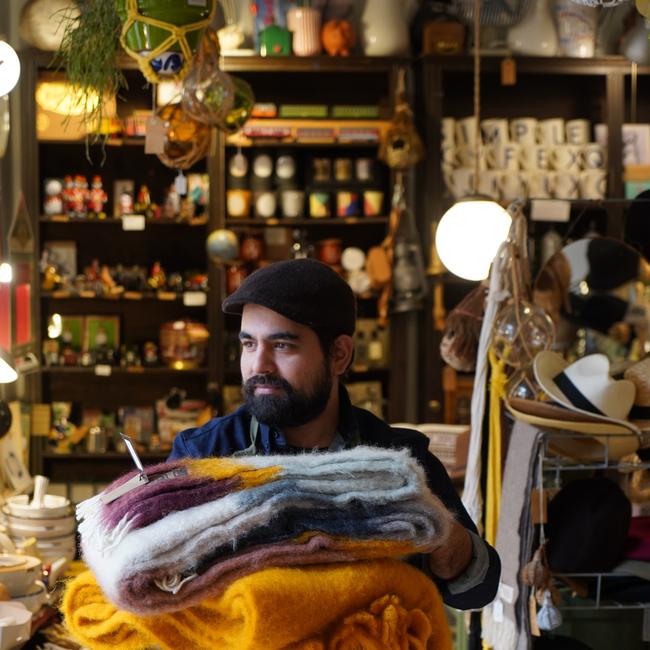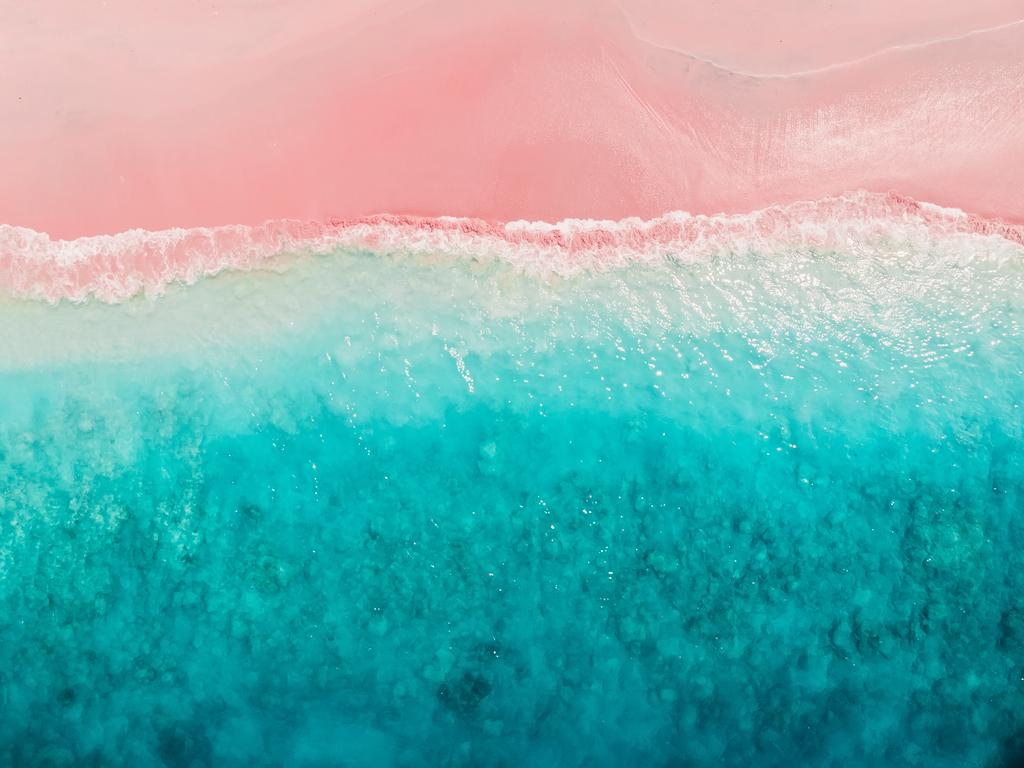10 reasons why Valencia is a design hot spot
Art, culture, food and incredible furniture stores... Spain’s third largest city has snuck well and truly under the radar.

Valencia is an underrated city in Spain but it has good food and design inspiration in the form of architecture, furniture stores, jewellery and art destinations.

1. Valencia – Design City
Opened in 2017, the Carme Contemporary Culture Centre is the epicentre of the city’s annual Design Week (held in September) and has rapidly become Valencia’s must-see for contemporary art and culture. The institution’s director Jose Luis Perez Pont is on a mission to showcase design as part of the general program, along with democratising cutting-edge visual arts for a wide audience. The space alone is incredible; a labyrinthine, multi-level, medieval complex that was once a convent. Shows, which are always strong on social comment, can veer from photography to craft, sculpture and furniture. After a sellout retrospective of the work of Jaime Hayon, the famous Spanish designer and artist provocateur who lives in Valencia, the CCCC salutes another native son. Until April 14, visitors can view Prospectiva, a show of the futuristic, pixelated artwork from Felipe Pantone, another Valencian artist on the rise.

2. Alma del Temple
Valencia’s Carme district is the city’s ancient heart, and any architectural work carried out in its townhouses and palaces inevitably encounters ruins dating from the city’s first epochs. Such is the case of Alma del Temple, where dining rooms are demarcated by sections of the city’s original Arabic walls. Barcelonese designer Francesc Rife transformed the space into an up-market restaurant where elegant minimalism seamlessly blends with archaeological vestiges and artefacts found on the site. Head chef Sarah Olmedo presents a creative menu using local ingredients with great flair and visual appeal. Priced at €25 ($41) (€35 on weekends), the restaurant’s three-course lunch menu is probably the best-value gastronomic experience in the city.

3. Cuadernos Rubio
Spanish designers excel at taking a beloved icon and turning it on its head. For more than 60 years, Cuadernos Rubio has published text and notebooks that teach, through practice and repetition, every Spanish child perfect handwriting and how to calculate basic maths. The company’s first flagship store is designed by Masquespacio, a local studio that has come to define Valencia’s exuberant, playful aesthetic. The store’s interior unfolds with a retro-futuristic feel, with big shiny stands and tables, bold pops of neon colour and interactive peepholes, goggles and tablets. The books got a rebrand too, with pretty covers in sorbet tones and enchanting illustrations. Spanish children still largely learn their ABCs in an orthodox way, but at least now they can do it with cool eye candy.

4. Bombas Gens
On the northern side of the Turia River that cuts through Valencia, Bombas Gens is an exciting contemporary arts centre risen from the ashes of a disused water pump factory. Its Art Deco facade shelters two giant exhibition spaces, once the factory floors, that have been adapted to their new use by renowned local interior architect and designer Ramon Esteve. Shows span all media, and until June 2024 visitors can see a selection of contemporary photography curated by the radical Madrid-based design studio El Ultimo Grito. Whatever is on display, it’s worth coming to see how Esteve has thoughtfully restored the once-abandoned site, highlighting its brickwork and masonry and bringing in the remains of a 15th-century farmhouse that was discovered on the lower floors. Part of the project includes the eponymous restaurant of Ricard Camarena, one of Spain’s most lauded chefs.

5. Simple
With so much trendy design on show in Valencia, it can be refreshing to get back to basics. Simple is a lovingly curated little boutique in the El Carmen district that celebrates “made in Spain” craft and everyday objects. Its wooden shelves are stacked high with striped pottery and enamelled cookware, baskets burst with espadrilles and sheepskin slippers, and straw bags and sunhats dangle from every hook. Top buys include plastic fishermen’s sandals (essential wear on Spain’s rocky inlets), floral cologne from the Madrid-based Alvarez Gomez perfume house, and virgin wool blankets hand spun in isolated villages of Zamora.

6. Candela en Rama
To wear with her wedding dress, young jeweller Candela Blasco created a necklace made of grains of rice. The symbolism was twofold. Rice can no longer be thrown at weddings in Spain, so she wanted to “wear” it in some way. Second, rice is a symbol of Valencia, the region being surrounded by rice fields – it’s the home of paella, after all. The necklace became the foundation of Blasco’s exquisite Sembra collection, which imitates the surprisingly nuanced forms of rice grains in silver and gold. Her other designs are also personal and symbolic, referencing, among other things, silvery Mediterranean fish swimming at twilight and the textural bark of a fig tree. The interior design of her beautiful shop situated a stone’s throw from the IVAM modern art museum, also expresses a love of natural forms.

7. The Espanista
This is a fab place to pick up foodie finds and admire how well Spanish designers do packaging . From a well-curated selection of wines and vermouths to chipper little tins of sardines and mussels, chocolate in Art Nouveau-inspired boxes and packs of iconic “Bonilla a la vista” potato chips from Galicia, there are plenty of temptations. If taking it home is an issue, peruse instead the selection of vintage Valencia travel posters. El Espanista has three shops in the city, the largest located in the trendy Ruzafa district near its buzzing market. After visiting, pop next door to Blackbird Cafe for excellent coffee and brunch.

8. Canalla Bistro
With five restaurants and two Michelin stars, lauded chef Ricard Camarena seems to feature in every conversation about food in Valencia. Canalla Bistro is a great place to get a taste for his playful style, which often fuses Asian and South American flavours with local seafood and produce grown in the huertas (farming areas) of Valencia. Small plates are delivered by cool, friendly waiters who don’t take things too seriously but genuinely care. Let the fun begin by ordering a tartare of salmon and avocado with wasabi presented in a giant ice-cream cone, and finish by sharing a gigantic wafer filled with Ferrero Rocher ice-cream – a riff on a favourite children’s summertime treat. Even the decor, with its low-hung lights, sleek dark wood tables and cartoonish wall masks, suggests a serious soul with a mischievous edge.

9. Centro de Arte Hortensia Herrero
The recently opened Centro de Arte Hortensia Herrero is the most ambitious, and likely costly, addition to the city’s art scene since architect Santiago Calatrava completed the futuristic City of Arts and Sciences in 2009. For the project, local studio ERRE Arquitectura painstakingly restored and adapted a 17th-century mansion, a process that was delayed by numerous architectural remains from the Roman, Arabic and Jewish periods that were encountered along the way. Where possible, these have been incorporated into the overall plan, which gives the feeling of travelling through a time machine. The collection on show, however, has its feet firmly in modern times. All the works are part of the foundation created by Hortensia Herrero, wife of the owner of a major Spanish supermarket group. Her taste is impeccable. Artists include Spanish heavyweights such as Jaume Plensa and Manolo Valdes, to global superstars Tony Cragg and Anish Kapoor. British video artist Mat Collishaw created a special work for the collection inspired by Valencia’s famous fallas festivities, which see the whole city illuminated by bonfires.

10. Casa Clarita
Madrileno designer Jaime Hayon made Valencia his home base in 2009. Since then, he has lent his humorous signature to interior projects all over the world, along with leading design firms such as Fritz Hansen and BD Barcelona. He has stated that he finds plenty of inspiration in Valencia: the clear light, the ephemera and folk art that can be found in the traditional shops in the old city, and the naturally cheery disposition of Valencia’s residents. All this comes together in Casa Clarita, Hayon’s first hotel project in the city. Beautifully positioned within walking distance to the cathedral and other ancient landmarks of the La Seu district, the designer transformed a 19th-century townhouse into a boutique property that oozes happiness. High-quality, custom-built furniture and fittings mingle with vintage finds and quirky accents, while original details such as the tiled flooring and carved staircase have been carefully restored. The casa has 12 spacious guestrooms and 10 apartments, and a bright, light-filled breakfast venue that gets your day off to a fabulous start.



